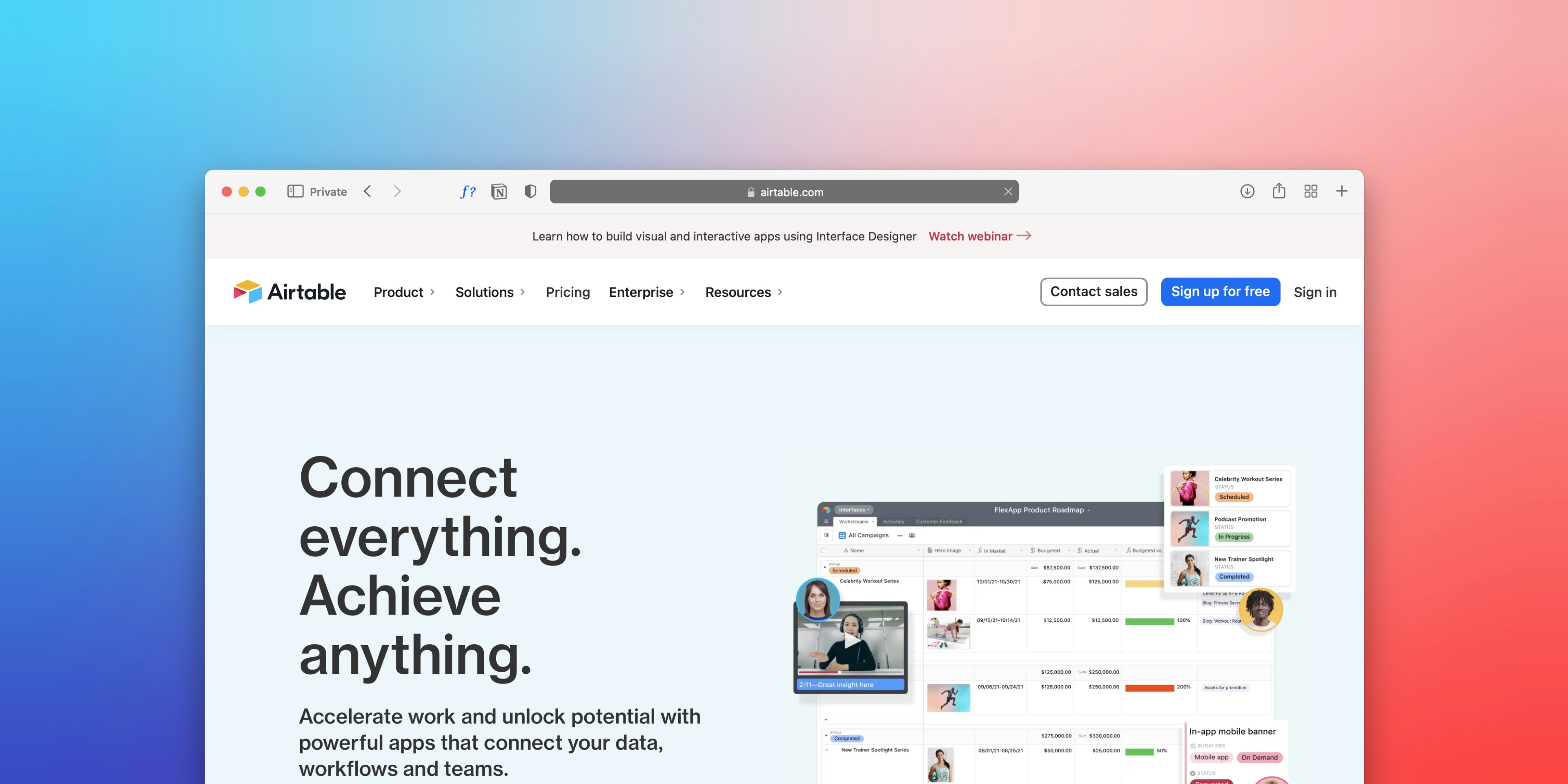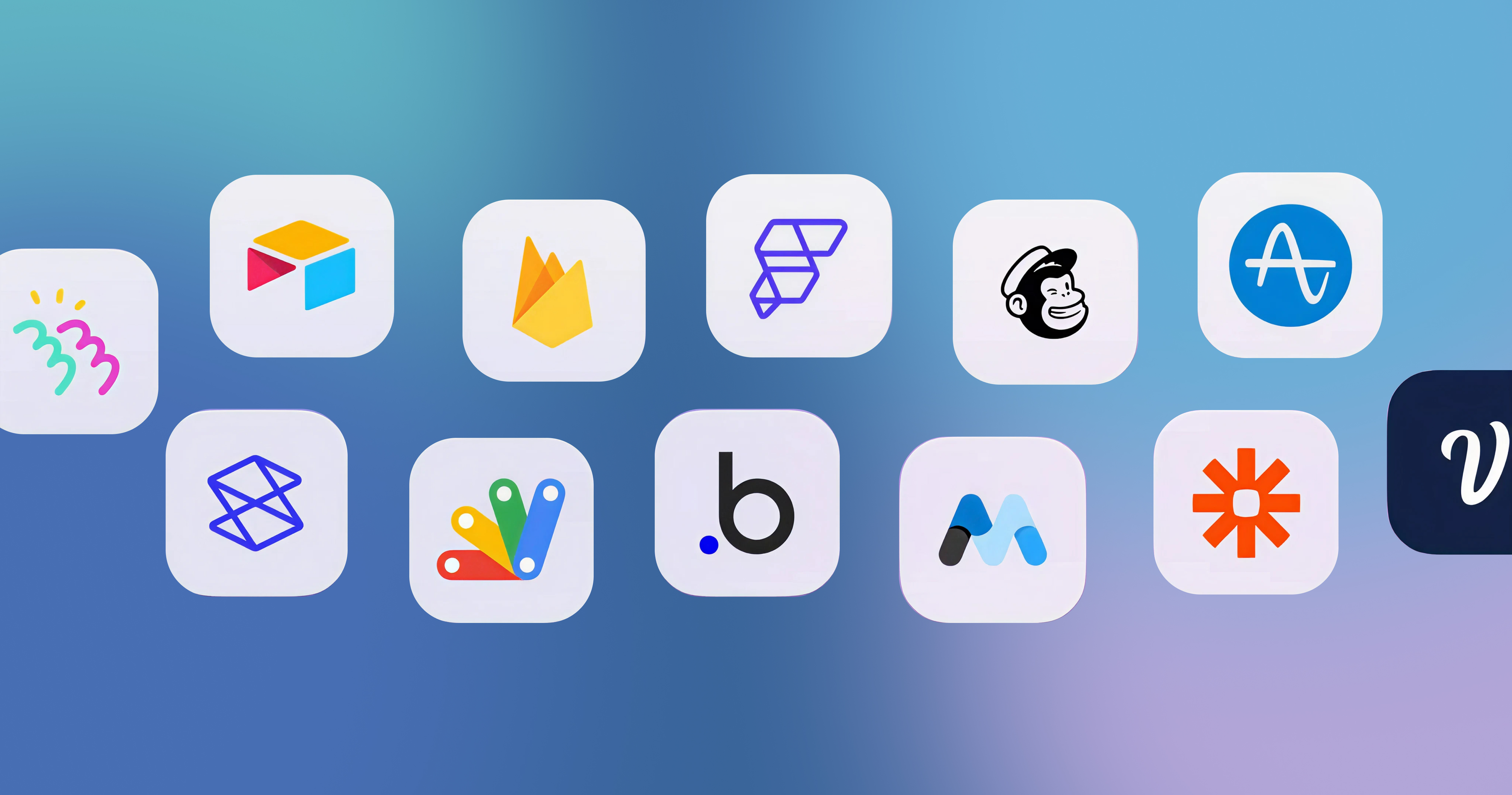-p-2000.png)


18 Reasons Why No-Code/Low-code Is the Future of Development

The number of organizations turning towards low-code no-code methods of development is increasing rapidly.
In fact, recent studies show that 84% of companies have already adapted to low-code no-code tools to cover the technological gap created by the lack of developers.
So, is low-code no-code the future of development?
Before getting into the details, let’s start with the basics.
What is no-code development?
No-code development sometimes referred to as “low-code” or “visual development” is a new way of creating software systems that enable people without coding experience to develop software.
Sounds like work-made-easy right?
It often uses visual components, such as drag-and-drop elements, components, and web-based forms, to construct an application. This makes it easy for users to quickly create, test, and deploy applications without manual hassle!
Simply, no-code development lets even people with zero coding experience create applications that they need. So, is no-code the future – yes!
If you're interested in trying out some powerful no-code automation tools, check out this article on 8 No-Code Automation Tools You Need to Try Today!
What is low-code development?
Low-code development is a software development method that uses graphical user interfaces and low-code platforms to quickly and easily create applications and business solutions.
This approach enables developers to create applications faster than traditional coding approaches, allowing them to take advantage of the latest technologies and trends.
Low-code development is an ideal solution for companies that need to develop software applications quickly and efficiently.
If you're interested in discovering the various use cases for low-code, check out our article on Top 12 Low Code Use Cases.
The rise of no-code/low-code
The rise of no-code/low-code development is one of the most exciting trends in the world of software and web development.
No-code/low-code development is a way for companies to quickly and efficiently create applications and websites without requiring extensive coding knowledge.
Lucky for us, this type of development allows companies to quickly build applications and websites without the need for experienced developers.
No-code/low-code development is especially beneficial for businesses with limited budgets and resources. It allows companies to develop applications quickly and cost-effectively, while still providing the features and functionality they need.

One thing is for sure, no-code/low-code development is changing the way companies develop applications!
It is a cost-effective way to quickly create applications while still providing companies with the features and functionality they need. Not only that but it allows companies to be more creative and iterate quickly based on user feedback and usage data.
This justifies the rise of no-code/low-code development and why no-code has become an exciting trend that will continue to have a major impact on the world of software development.
If you're looking to build a SaaS MVP with no-code, check out this article on 12 No-Code Tools to Build a SaaS MVP Without Coding. It's a great resource for those who want to take advantage of the no-code trend.
Why is no-code/low-code the future?

No-Code/Low-Code platforms offer a range of benefits that make them the future of software development.
Here are 18 reasons why no-code low-code is the future:
1. Faster Development Time
One of the most significant advantages of no-code/low-code development is that it requires significantly less time to create applications and websites.
This is because developers do not need to write out lengthy code in order to create their applications. All that is required is to drag and drop components and widgets onto the platform. This makes it easier and faster to develop applications and websites.

2. Cost-Effective
No-code/low-code development is significantly more cost effective than traditional coding. This is because developers do not need to hire expensive developers to code applications and websites.
With no-code/low-code, developers can get the same results at a fraction of the cost.
3. Less Coding Knowledge Needed
No-Code/Low-Code platforms are designed to reduce the amount of coding knowledge needed to develop applications, allowing less experienced developers to create web and mobile applications without hiring a team of specialists.

4. Increased Productivity
No-code/low-code development increases productivity by allowing developers to focus on the design and user experience, rather than worrying about writing long lines of code.
This helps developers to create better, more intuitive applications and websites.
5. Easier to Maintain
No-code/low-code development makes it easier to maintain applications and websites. This is because all the components of the application are visual and easy to understand.
This helps developers to quickly identify any issues and fix them as soon as possible.
6. Increased Efficiency
No-Code/Low-Code platforms enable developers to create applications with fewer resources and in less time, allowing organizations to deploy applications faster and more efficiently.
7. Increased User Engagement
With no-code/low-code development, developers can create applications that are more engaging for users. This is because the user interface is simpler and easier to use. This helps to keep users more engaged and encourages more interaction with the application.

8. Simplicity
No-Code/Low-Code platforms are designed to be easy to understand and use, allowing users to quickly create applications without having to learn complex coding languages. This makes them ideal for creating applications without requiring a large amount of technical knowledge.
9. Ease of use
Users of No-Code/Low-Code platforms can rapidly create applications without having to learn difficult coding languages because these platforms are made to be simple to comprehend and use. Because of this, they are perfect for developing apps without a lot of technological expertise.
10. Decrease in the failure rate

Big projects collapse at an astoundingly high rate. They encounter difficulties as a result of high costs, rigid schedules, and unclear standards.
Businesses can fix it by implementing low-code application development.
It expedites the job without the need to hire costly IT specialists. It significantly lowers the failure rate, which is further linked to expense or timetable overruns.
Additionally, when the company creates the application on its own, the chance of failure is also removed.
11. Building quickly
The days of coders writing lengthy programs and lines of code are long gone. These code sections would then undergo an A/B test to demonstrate their effectiveness after being created.
The user can now see exactly what needs to be included and omitted in the application thanks to low-code platforms and apps. Rapid prototype testing saves time, lowers expenses, and opens up more opportunities for study.
12. Interconnection
The world has undergone significant change as a result of Social Media, Smart Technology, Machine Learning, Artificial Intelligence, and Big Data.
Every company needs to establish a footprint. They must be linked across data, devices, people, and procedures to accomplish this.
The ideal framework for app integration and ensuring smooth interoperability is provided by low-code. It is compatible with cloud-based data-storing programs as well.
13. Several Deployments
In the past, groups created specialized programs and codes to make every aspect of the endeavor run smoothly.
Additionally, creating harmony within the algorithms is difficult. With the advent of the low-code programming framework, this issue is resolved.
It allows companies to simultaneously develop and launch apps for a variety of platforms. In order to increase accessibility and management, it also makes use of this to offer low-code mobile app creation.
14. Visualization
Platforms for developing low-code applications advance by incorporating the visual aspect of the representation of registration and/or local concepts.
To aid in the depiction of their language, they devise a simple structure. It also aids in removing the conflict between creating and executing the previous application.

15. Legacy tools, farewell!
The conventional legacy methods were rigid and challenging, which is why they were ineffective. Data could only be entered on paper or in files and sent to the central office for processing. These stages slowed down the entire process and raised the possibility of mistakes.
The cloud has changed legacy systems and increased working freedom. You will hardly ever encounter mistakes because no-code, low-code citizen development teams now work with automation and openness. Additionally, the entire procedure is quicker.
16. Customization possibilities
No-code/low-code development also allows companies to be more creative when it comes to their applications. Companies can use this type of development to create unique applications that are tailored to their specific needs and requirements.
17. High scalability
No-code/low-code development allows companies to quickly iterate and innovate based on user feedback and usage data. This makes it easier for companies to stay ahead of the competition and create the best products possible.
18. Easy to learn
One of the major reasons why low-code is the future is that it’s relatively easier to learn than any other coding method. You can effortlessly find tutorials and resources online to get started. Also, there are also numerous online no-code/low-code platforms available to help you quickly create applications.
Additionally, everything here is adaptable to shifting requirements. Nearly none is dependent!
Reach out to our no-code experts!
Contact usConclusion: The future is here!
It's now clear that the future of software development is headed toward no-code/low-code solutions.
And let's not deny the fact, who doesn't love a good shortcut?
With no-code/low-code tools, even those of us who can barely spell "programming" (let alone actually code) can create amazing software solutions. It's like having your cake and eating it too, without having to actually bake the cake (unless you want to, of course).
So say goodbye to endless lines of code and hello to a future where anyone can create software with ease. Who knows, maybe even your grandma will be coding up a storm in no time!
Further Reading: Low-Code vs. No-Code: What's the Real Difference?

Reach out to our no-code experts!
Contact usReach out to our no-code experts!
Contact usFAQ
Editorial Team
Publisher
The number of organizations turning towards low-code no-code methods of development is increasing rapidly.
In fact, recent studies show that 84% of companies have already adapted to low-code no-code tools to cover the technological gap created by the lack of developers.
So, is low-code no-code the future of development?
Before getting into the details, let’s start with the basics.
What is no-code development?
No-code development sometimes referred to as “low-code” or “visual development” is a new way of creating software systems that enable people without coding experience to develop software.
Sounds like work-made-easy right?
It often uses visual components, such as drag-and-drop elements, components, and web-based forms, to construct an application. This makes it easy for users to quickly create, test, and deploy applications without manual hassle!
Simply, no-code development lets even people with zero coding experience create applications that they need. So, is no-code the future – yes!
If you're interested in trying out some powerful no-code automation tools, check out this article on 8 No-Code Automation Tools You Need to Try Today!
What is low-code development?
Low-code development is a software development method that uses graphical user interfaces and low-code platforms to quickly and easily create applications and business solutions.
This approach enables developers to create applications faster than traditional coding approaches, allowing them to take advantage of the latest technologies and trends.
Low-code development is an ideal solution for companies that need to develop software applications quickly and efficiently.
If you're interested in discovering the various use cases for low-code, check out our article on Top 12 Low Code Use Cases.
The rise of no-code/low-code
The rise of no-code/low-code development is one of the most exciting trends in the world of software and web development.
No-code/low-code development is a way for companies to quickly and efficiently create applications and websites without requiring extensive coding knowledge.
Lucky for us, this type of development allows companies to quickly build applications and websites without the need for experienced developers.
No-code/low-code development is especially beneficial for businesses with limited budgets and resources. It allows companies to develop applications quickly and cost-effectively, while still providing the features and functionality they need.

One thing is for sure, no-code/low-code development is changing the way companies develop applications!
It is a cost-effective way to quickly create applications while still providing companies with the features and functionality they need. Not only that but it allows companies to be more creative and iterate quickly based on user feedback and usage data.
This justifies the rise of no-code/low-code development and why no-code has become an exciting trend that will continue to have a major impact on the world of software development.
If you're looking to build a SaaS MVP with no-code, check out this article on 12 No-Code Tools to Build a SaaS MVP Without Coding. It's a great resource for those who want to take advantage of the no-code trend.
Why is no-code/low-code the future?

No-Code/Low-Code platforms offer a range of benefits that make them the future of software development.
Here are 18 reasons why no-code low-code is the future:
1. Faster Development Time
One of the most significant advantages of no-code/low-code development is that it requires significantly less time to create applications and websites.
This is because developers do not need to write out lengthy code in order to create their applications. All that is required is to drag and drop components and widgets onto the platform. This makes it easier and faster to develop applications and websites.

2. Cost-Effective
No-code/low-code development is significantly more cost effective than traditional coding. This is because developers do not need to hire expensive developers to code applications and websites.
With no-code/low-code, developers can get the same results at a fraction of the cost.
3. Less Coding Knowledge Needed
No-Code/Low-Code platforms are designed to reduce the amount of coding knowledge needed to develop applications, allowing less experienced developers to create web and mobile applications without hiring a team of specialists.

4. Increased Productivity
No-code/low-code development increases productivity by allowing developers to focus on the design and user experience, rather than worrying about writing long lines of code.
This helps developers to create better, more intuitive applications and websites.
5. Easier to Maintain
No-code/low-code development makes it easier to maintain applications and websites. This is because all the components of the application are visual and easy to understand.
This helps developers to quickly identify any issues and fix them as soon as possible.
6. Increased Efficiency
No-Code/Low-Code platforms enable developers to create applications with fewer resources and in less time, allowing organizations to deploy applications faster and more efficiently.
7. Increased User Engagement
With no-code/low-code development, developers can create applications that are more engaging for users. This is because the user interface is simpler and easier to use. This helps to keep users more engaged and encourages more interaction with the application.

8. Simplicity
No-Code/Low-Code platforms are designed to be easy to understand and use, allowing users to quickly create applications without having to learn complex coding languages. This makes them ideal for creating applications without requiring a large amount of technical knowledge.
9. Ease of use
Users of No-Code/Low-Code platforms can rapidly create applications without having to learn difficult coding languages because these platforms are made to be simple to comprehend and use. Because of this, they are perfect for developing apps without a lot of technological expertise.
10. Decrease in the failure rate

Big projects collapse at an astoundingly high rate. They encounter difficulties as a result of high costs, rigid schedules, and unclear standards.
Businesses can fix it by implementing low-code application development.
It expedites the job without the need to hire costly IT specialists. It significantly lowers the failure rate, which is further linked to expense or timetable overruns.
Additionally, when the company creates the application on its own, the chance of failure is also removed.
11. Building quickly
The days of coders writing lengthy programs and lines of code are long gone. These code sections would then undergo an A/B test to demonstrate their effectiveness after being created.
The user can now see exactly what needs to be included and omitted in the application thanks to low-code platforms and apps. Rapid prototype testing saves time, lowers expenses, and opens up more opportunities for study.
12. Interconnection
The world has undergone significant change as a result of Social Media, Smart Technology, Machine Learning, Artificial Intelligence, and Big Data.
Every company needs to establish a footprint. They must be linked across data, devices, people, and procedures to accomplish this.
The ideal framework for app integration and ensuring smooth interoperability is provided by low-code. It is compatible with cloud-based data-storing programs as well.
13. Several Deployments
In the past, groups created specialized programs and codes to make every aspect of the endeavor run smoothly.
Additionally, creating harmony within the algorithms is difficult. With the advent of the low-code programming framework, this issue is resolved.
It allows companies to simultaneously develop and launch apps for a variety of platforms. In order to increase accessibility and management, it also makes use of this to offer low-code mobile app creation.
14. Visualization
Platforms for developing low-code applications advance by incorporating the visual aspect of the representation of registration and/or local concepts.
To aid in the depiction of their language, they devise a simple structure. It also aids in removing the conflict between creating and executing the previous application.

15. Legacy tools, farewell!
The conventional legacy methods were rigid and challenging, which is why they were ineffective. Data could only be entered on paper or in files and sent to the central office for processing. These stages slowed down the entire process and raised the possibility of mistakes.
The cloud has changed legacy systems and increased working freedom. You will hardly ever encounter mistakes because no-code, low-code citizen development teams now work with automation and openness. Additionally, the entire procedure is quicker.
16. Customization possibilities
No-code/low-code development also allows companies to be more creative when it comes to their applications. Companies can use this type of development to create unique applications that are tailored to their specific needs and requirements.
17. High scalability
No-code/low-code development allows companies to quickly iterate and innovate based on user feedback and usage data. This makes it easier for companies to stay ahead of the competition and create the best products possible.
18. Easy to learn
One of the major reasons why low-code is the future is that it’s relatively easier to learn than any other coding method. You can effortlessly find tutorials and resources online to get started. Also, there are also numerous online no-code/low-code platforms available to help you quickly create applications.
Additionally, everything here is adaptable to shifting requirements. Nearly none is dependent!
Reach out to our no-code experts!
Contact usConclusion: The future is here!
It's now clear that the future of software development is headed toward no-code/low-code solutions.
And let's not deny the fact, who doesn't love a good shortcut?
With no-code/low-code tools, even those of us who can barely spell "programming" (let alone actually code) can create amazing software solutions. It's like having your cake and eating it too, without having to actually bake the cake (unless you want to, of course).
So say goodbye to endless lines of code and hello to a future where anyone can create software with ease. Who knows, maybe even your grandma will be coding up a storm in no time!
Further Reading: Low-Code vs. No-Code: What's the Real Difference?
Reach out to our no-code experts!
Button TextFAQ
Editorial Team
Publisher




Hi, I'm Mike!
If you are enjoying the article, feel free to subscribe to our monthly newsletter.
If you have any project requirements, please contact us.







.png)









